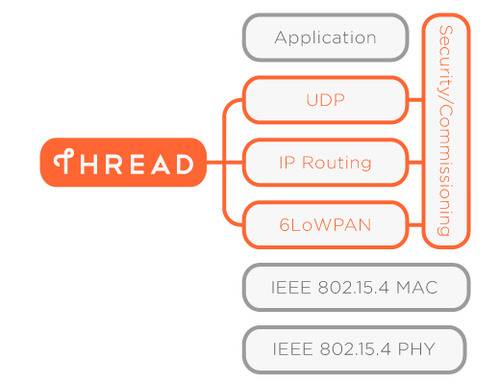The smart home, an Internet of Things movement to connect your household appliances, has an ironic problem: communication. Numerous approaches, platforms and standards have sprung up to thoroughly confuse consumers, making it difficult to know which devices can actually talk to each other.
Google-owned smart thermostat company Nest and its band of partners—Samsung Electronics, Yale Security, Silicon Labs, Freescale Semiconductor, computer processor licensing company ARM and ceiling fan maker Big Ass Fans—think they have a way to make things easier. The companies have joined forces to announce the formation of Thread, a non-profit group established to promote a new wireless networking protocol for the smart home.

The main difference between Thread and other types of smart homes is the technology at its foundation. Although it uses IPv6, an Internet protocol that identifies devices on a network, it doesn’t communicate over Wi-Fi or even Bluetooth. Thread uses 802.15.4, a short-range standard that draws very little power. And for gadgets that use it, such as ZigBee—a common smart home wireless specification— or 6LowPAN, support does not require any changes in hardware. Manufacturers that use ZigBee can make their devices Thread-compliant through a software update. That means even existing gadgets can support Thread. (Nest thermostats already come with a version of Thread support baked in.)

Consumers may be uniquely interested in Thread’s mesh networking capabilities. With a mesh network, a smart home wouldn’t require a hub as the intermediary between home devices. That means a glitch in the central hub or a glitchy Wi-Fi network won’t take down your entire smart home. Your devices would still be able to connect with each other, to kick on lights, turn on speakers or unlock your door when you arrive home.
According to Nest’s Chris Boross, president of Thread, the group aims to solve the interoperability quandary. Plus, Thread uses very little energy and offers tight security, “connecting up to 250 devices” and sealing them using “banking-class encryption.” Security’s a key issue, considering consumer fears over security could hinder smart home adoption. The other is clarity: By seeing Thread compliance listed, consumers could have an easier way to identify devices that work together.
The battle for wireless standards in the smart home of the future has become intense in 2014. The Open Internet Consortium vows to create the one true wireless standard, with Samsung, Dell and Intel at the fore. So does the AllSeen Alliance, with 51 members led by Qualcomm. The Industrial Internet Consortium features the likes of AT&T and General Electric. Large companies like Samsung belong to several of these industry groups, hedging bets to see which standard emerges on top.
See also: ZigZag Wants To Build A Lingua Franca For The Internet Of Things
It’s a different approach than Apple’s attempt to unify devices. Whether it’s better, however, isn’t clear. Apple’s HomeKit protocol doesn’t inherently restrict itself to certain technologies. Meanwhile Thread works primarily with ZigBee devices, leaving out the other two major smart home specifications, Z-Wave and Insteon, as well as numerous other Wi-Fi-only appliances. That means thousands of products are left out of this loop. So much for communication.
Feature image courtesy of Flickr user Jeff Wilcox. Inset images courtesy of Flickr user Bit Boy and Thread Group.





